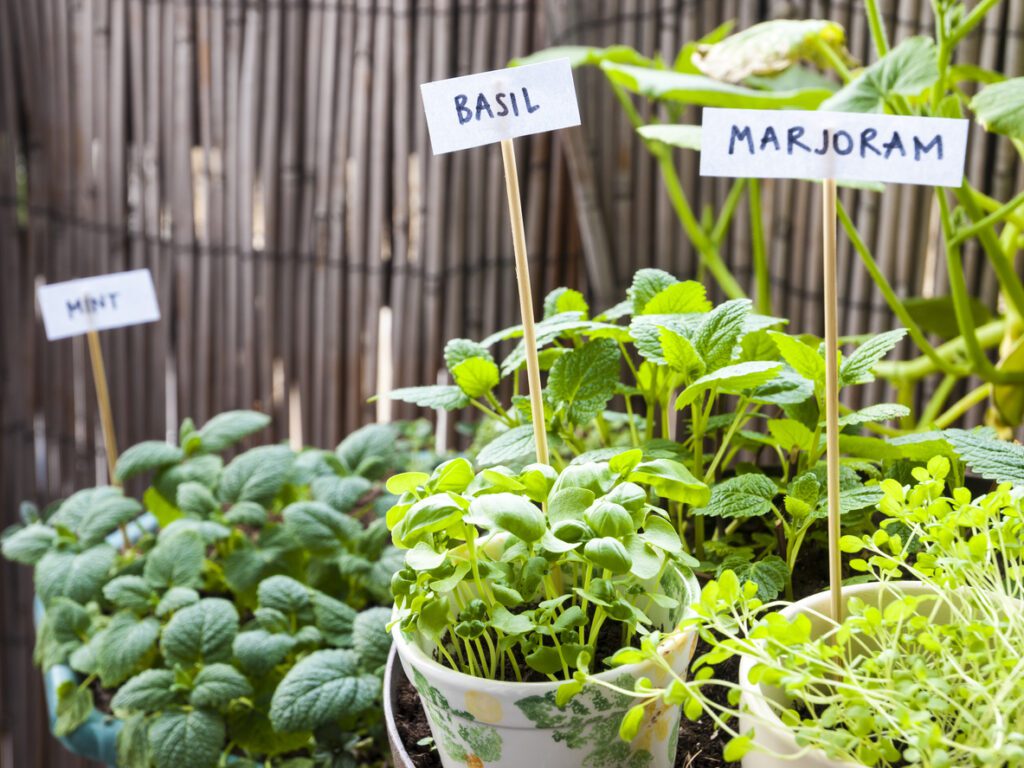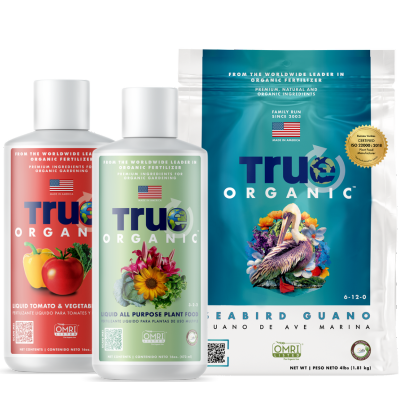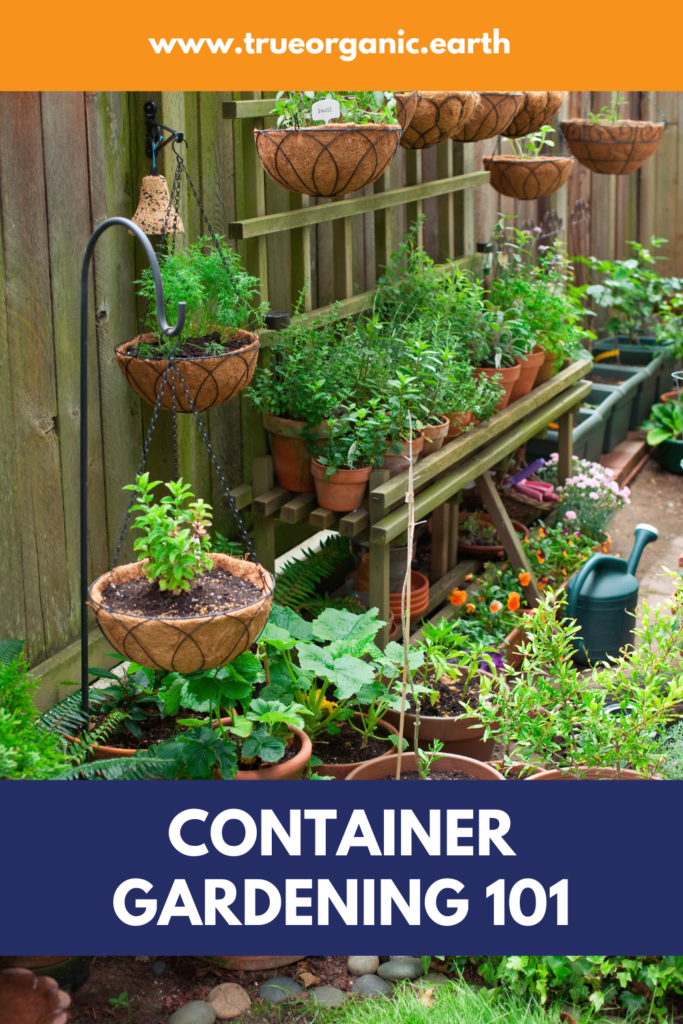March 30, 2023
Container Gardening 101: Starting A Potted Garden in Any Space
Container Gardening 101: Starting A Potted Garden in Any Space
So you want to grow a luscious garden but you don’t have quite enough outdoor space…or any outdoor space at all? 😮
Don’t fret! Growing a garden in containers is a wonderful, fun, effective way to grow plants of all kinds. Container gardening is a great way for beginner gardeners to start learning how to grow plants on a small scale with minimal commitment.
Spring is a fantastic time to start a container garden indoors or outdoors — so prep your back patio, shared apartment complex outdoor space, even your front steps or windowsill.
Choose your container
There are a huge variety of containers you can use to grow plants, all with different characteristics and aesthetics. It can be intimidating to choose your growing containers, so start by looking at these variables:
- What plants you’re growing
- Your desired aesthetics
- How much space you have
- How much time and effort you want to devote to creating containers
- Your budget
- Your climate
 Container Size
Container Size
It’s a good idea to maximize the size and depth of your container to allow roots more space to
grow. A 5-gallon container is perfect for tomatoes, peppers, big flowers (like dahlias and bougainvillea) and other fruiting veggies, while something smaller will be a happy home for smaller plants that don’t have large root systems.
Use more shallow pots or boxes for plants that don’t need a ton of root space like herbs, grasses, lettuce, and other greens.
If you’re growing on a balcony, be careful with heavy, big containers — you don’t want to damage the foundation of your balcony! Small containers can be more versatile and quick-drying, so are great for small balconies and window boxes.
Container Material
Container materials also have their own characteristics: weight, drainage, sensitivity to weather, and cost. Larger containers tend to need less frequent watering, but are heavy and hard to move. Small containers are convenient for rearranging, but will dry out more quickly and need more frequent watering.
There are so many materials to choose from when it comes to small-space container gardening! Here are the most common options and some things to keep in mind when container gardening in each:
- Fabric: Super-lightweight, drainable, and breathable, fabric “pots” are a good choice for small plants, hanging gardens, and container garden situations that may need frequent rearranging.They’re easy to wash and reuse season after season. They are expectedly a bit flimsy, so don’t use fabric for very tall, stemmy plants or anything with heavy fruits.
- Plastic: Inexpensive and light-weight, plastic is a go-to for many container gardeners. It’s also super easy to add drainage holes to plastic containers. But if you want something more aesthetically pleasing, plastic might not be for you.
- Terracotta: Heavier than plastic but almost as inexpensive, terracotta/clay is the next step up when it comes to aesthetics. Terracotta is fragile and absorbent, so be careful with this material if you live in a very windy area or a place that gets freeze-thaw cycles, as terracotta may crack in Zones with widely changing temperature and humidity.
- Wood: Be sure to use a durable, non-treated wood when planting in wood containers. Cedar or pine work well.
- Concrete: Concrete is ideal for container gardens that are semi-permanent, as it is extremely heavy! Concrete’s durability and heaviness makes it wonderful for any type of weather, places with high winds, and long-lasting perennials, flowering plants and vines that you want to last for years to come. Perfect for front porch and stoop adornment.
- Plant-based, biodegradable “plastic”: The newest innovation in container gardening and houseplant growing is plant-based pots that can even be biodegradable! They can be more expensive than other materials. They often come in a lovely rainbow of colors and you can find them at most garden stores and even some homegoods stores nowadays.
Choose your location
Just as with a standard garden bed, consider sunlight exposure, water accessibility, and protection from weather and pests when deciding where to put your containers.
While you may have limited choice when it comes to where your containers are placed, you should maximize sunlight. But one of the great things about container gardening is mobility and variability.
If you don’t have a lot of light in your container garden area, pick plants that need less sunlight like lettuce, arugula, and other salad greens; chives and other herbs (except basil, which needs full sun), brassicas like broccoli and kale; ferns, fuschia, and other decorative flowers and foliage that don’t need full sun (just 4 hours per day can suit these plants).
If you do have a place for containers in full sun (at least 6 hours per day of direct sunlight), you’ll be able to grow basil, tomatoes, peppers, peas, and even okra and eggplant in pots!
Ensure good watering and drainage
Place your containers somewhere easy to water, either with a hose or with your watering can. Container-housed plants tend to need more frequent watering than in-ground plants because their limited soil can’t store as much moisture over time.
Remember that you need drainage holes for each and every type of plant! Don’t forego this important step. If you are using a material like wood, metal, plastic, or fabric, creating drainage holes that suit your crops’ needs is easy with a power drill or even kitchen scissors (with fabric). For clay, concrete, or more sturdy containers, be sure there are pre-existing drainage holes before you make a purchase.
Overwatering container plants (including houseplants) is a common fatal flaw. Check out our exclusive interview with rare plant grower and spa owner Elana Gainer to get some expert tips on how to care for container plants, especially indoor green friends.
Planting Into Containers
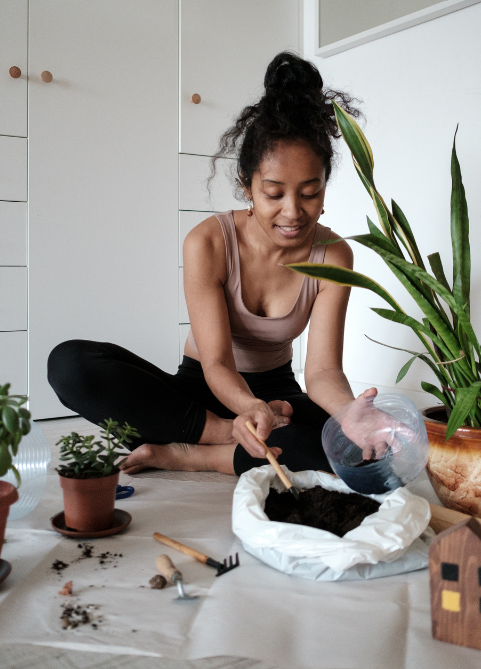
When you’re ready to plant your container garden, be sure to:
- Use new potting mix (not soil from the ground, which will be too heavy for a container).
- Mix in an organic granular fertilizer like our Organic All Purpose Plant Food or something more specific to your chosen crops.
- Fill the container about halfway or two thirds full with potting mix, depending on the depth of your plant’s existing roots and stems — then gently place your plant in the container.
- Fill in the space around your newly potted plant and eliminate air pockets by pressing gently around the whole container with your hands
- And water in — you may need to “top off” soil in a few days after the potting mix settles.
Fertilize Your Container Plants
Now for the best part, in our opinion: feeding your container garden with food-safe organic fertilizers!
When you first fill your containers, whether at the beginning of each season or upon planting or repotting, mix in a granular fertilizer. Our True Organic Raised Bed Food is an ideal boost for starting container gardens, formulated specifically to give above-ground plants the nutrition they need.
For abundant fruiting and flowering, try our ethically sourced Organic Seabird Guano — or explore our whole line of granular organic plant foods to see how True Organic can help you grow a beautiful, bountiful container garden.
During the active growing and fruiting seasons, applying a liquid is an easy, container-friendly choice. That’s why we designed our organic liquid plant foods for you! Adding some organic liquid plant food during your plants growing or fruiting seasons is quick and safe.
Our liquid organic plant foods (like Liquid All Purpose Plant Food or Tomato & Vegetable Food — both perfect for successful container gardening) are designed to be applied biweekly throughout active seasons for healthy, more fruitful gardens of all sizes.
Before you know it, you’ll be picking juicy tomatoes, admiring bright flowers, and harvesting fragrant herbs right from your patio or front steps. You’ll be surprised just how many varieties of flowers, veggies, herbs, and decorative plants can thrive in containers.
Show us your True Organic Plants
#GrowWithTrue
www.trueorganic.earth

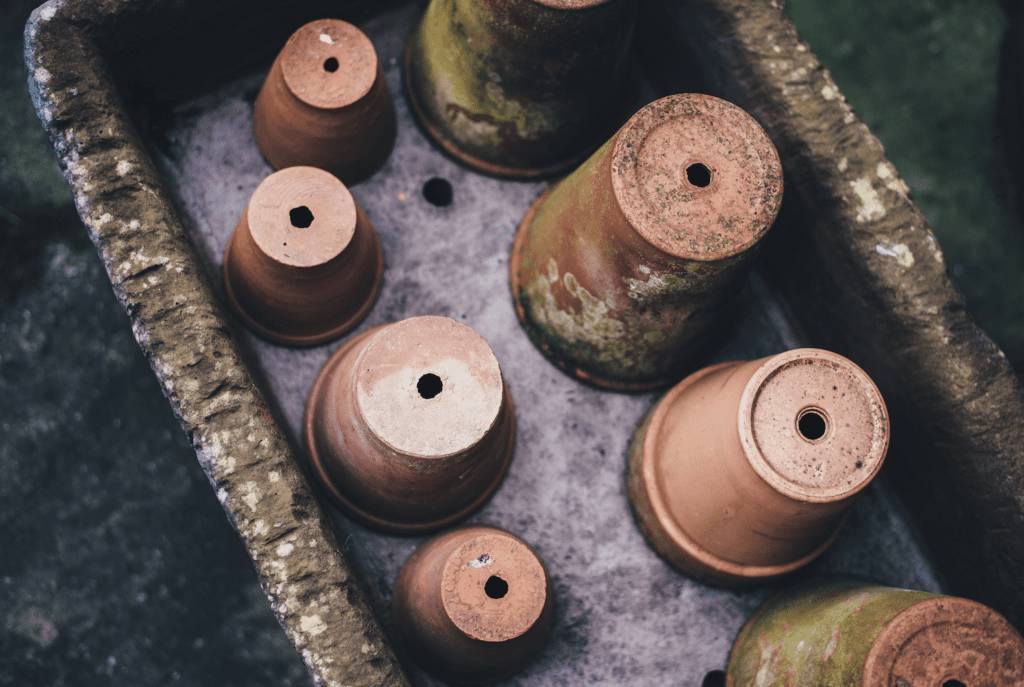 Container Size
Container Size